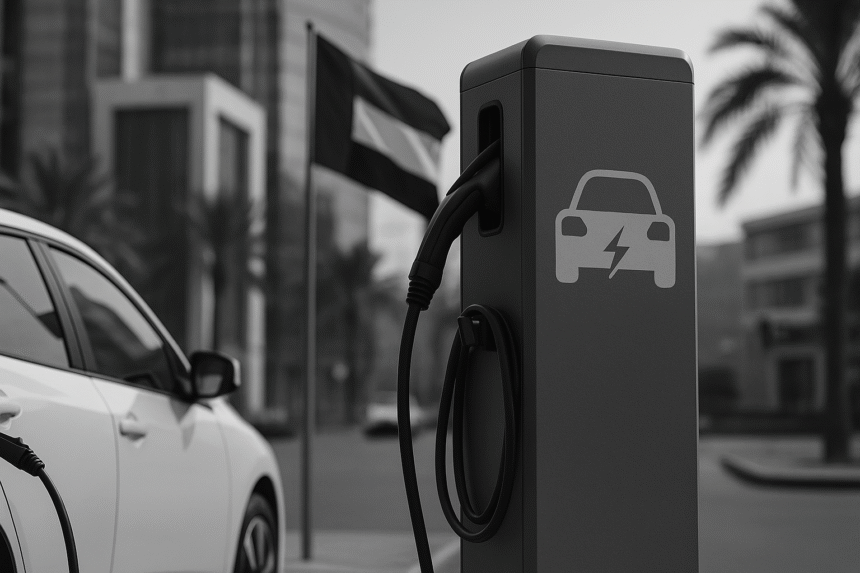UAE EV Charging Infrastructure: Who’s Building What?
As the UAE accelerates toward a cleaner mobility future, one question dominates the EV space: Who’s building the EV charging infrastructure?
The push for sustainable transport isn’t just about buying electric cars. It’s about ensuring those vehicles can charge—quickly, conveniently, and cost-effectively. With that, the UAE EV charging infrastructure is rapidly evolving, powered by public sector strategy and private sector innovation.
In this post, we break down who’s behind the buildout, how permissions are granted, and what companies should know to stay ahead.
DEWA’s Master Plan: Charging the Future
The Dubai Electricity and Water Authority (DEWA) is at the forefront of the UAE’s EV readiness. Through its Green Charger initiative, DEWA has installed over 350 charging stations across Dubai and aims to support 100% clean energy goals by 2050.
Key focus areas:
-
Expanding coverage to match rising EV adoption
-
Integrating stations into smart city infrastructure
-
Launching the DEWA EV App to streamline user experience
By 2030, DEWA plans to increase its Green Charger network to over 1,000 public chargers across Dubai.
The Role of CPOs and Technology Firms
While DEWA sets the regulatory tone, the bulk of actual station rollout is now being driven by Charge Point Operators (CPOs) and tech-enabled private firms.
Leading players include:
-
Shabik by CATEC – Manages infrastructure in residential communities
-
GreenParking – Focuses on hospitality and mall segments
-
Tesla UAE – Building supercharger corridors for Tesla vehicles
-
Etihad Water & Electricity – Leading projects in Northern Emirates
-
ADNOC and Emarat – Integrating chargers at fuel stations
Each of these companies collaborates with hardware providers, billing platforms, and mobile apps to deliver seamless EV experiences.
Government Targets and Ongoing Progress
The UAE Federal Government has set aggressive benchmarks:
| Objective | Target Year |
|---|---|
| 50% of all new cars electric or hybrid | 2030 |
| Net-zero emissions | 2050 |
| 10,000+ public charging points | 2030 |
Local municipalities are also aligning their urban development projects to include mandatory EV charger zoning, particularly in:
-
Residential buildings
-
Commercial centers
-
Public parking lots
-
Highway corridors
Land Allocation and Permitting: How It Works
To deploy charging infrastructure in the UAE, companies must navigate a multi-step process involving land approvals, CPO licensing, and compliance with utility standards.
Steps to install a public charging station:
-
Identify a viable site (private or government land)
-
Apply for land use permit via local municipality (e.g., RTA, DMT)
-
Submit design and technical specs for DEWA/ADDC/Etihad approval
-
Obtain a CPO license through relevant utility provider
-
Install and commission with inspection and compliance audits
Public land is often reserved for government-linked PPP projects, while private developers must show alignment with UAE Energy Strategy 2050 goals.
Interoperability and Smart Tech Integration
To keep pace with international standards, the UAE requires CPOs to offer interoperability, allowing users to access various networks through:
-
RFID cards
-
Mobile apps
-
Integrated payment systems
EV infrastructure projects are now bundled with:
-
Load balancing systems
-
Remote monitoring
-
Smart billing features
-
Grid-ready connectivity for future renewable integration
Challenges on the Ground
While the momentum is strong, challenges persist:
-
Grid load management in high-demand areas
-
EV charger downtime and maintenance
-
Unclear CPO licensing procedures in some Emirates
-
Parking abuse at free or subsidized chargers
Still, the regulatory ecosystem is maturing fast, with clearer frameworks being rolled out in 2025 under new UAE energy efficiency legislation.
What CEOs and Developers Need to Know
If you’re in real estate, logistics, retail, or fleet management, here’s how to engage in the UAE EV charging infrastructure buildout:
Consider these actions:
-
Partner with a licensed CPO to deploy chargers at your site
-
Factor in power availability and load permissions
-
Explore government grants or incentives for sustainable buildings
-
Stay informed on municipal EV zoning rules
The EV infrastructure race is not just about compliance—it’s about opportunity. Those who move early gain a competitive edge in real estate value, tenant satisfaction, and brand leadership.



Leave a Reply